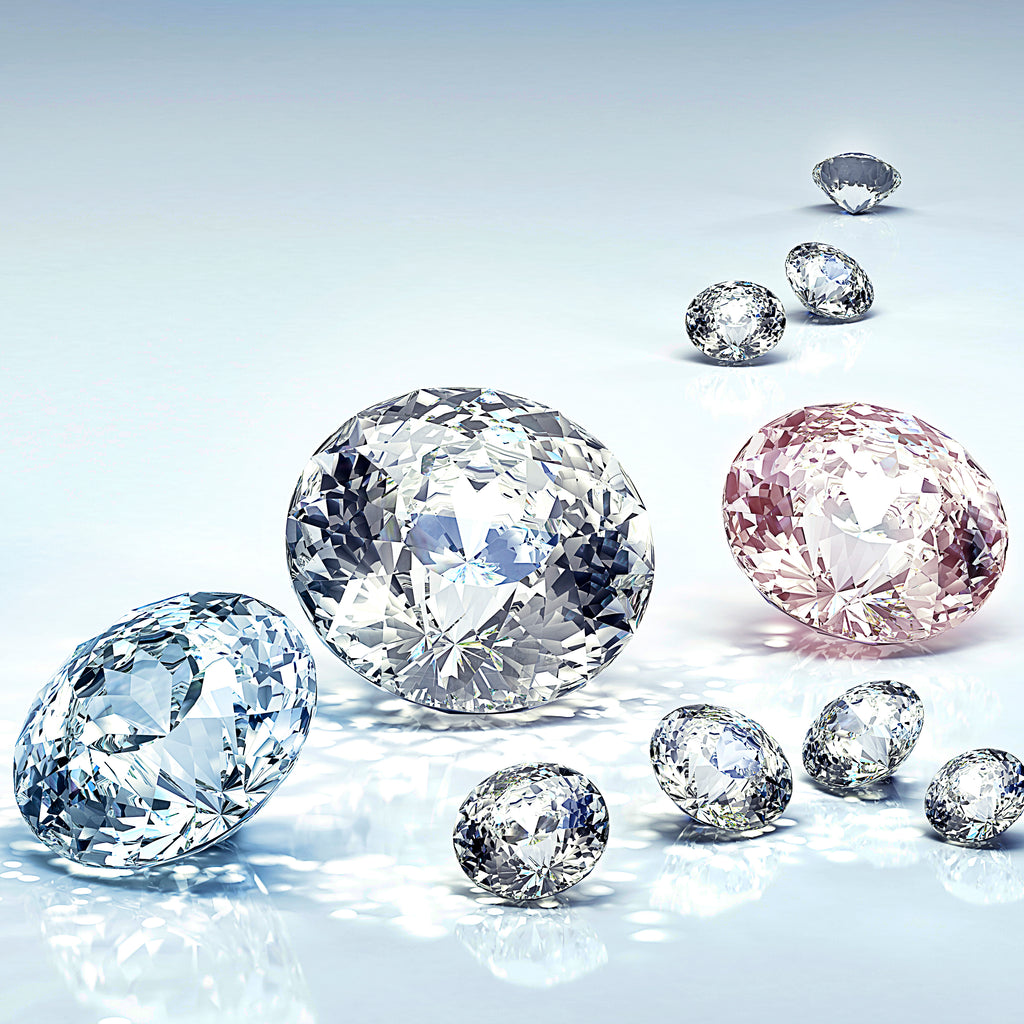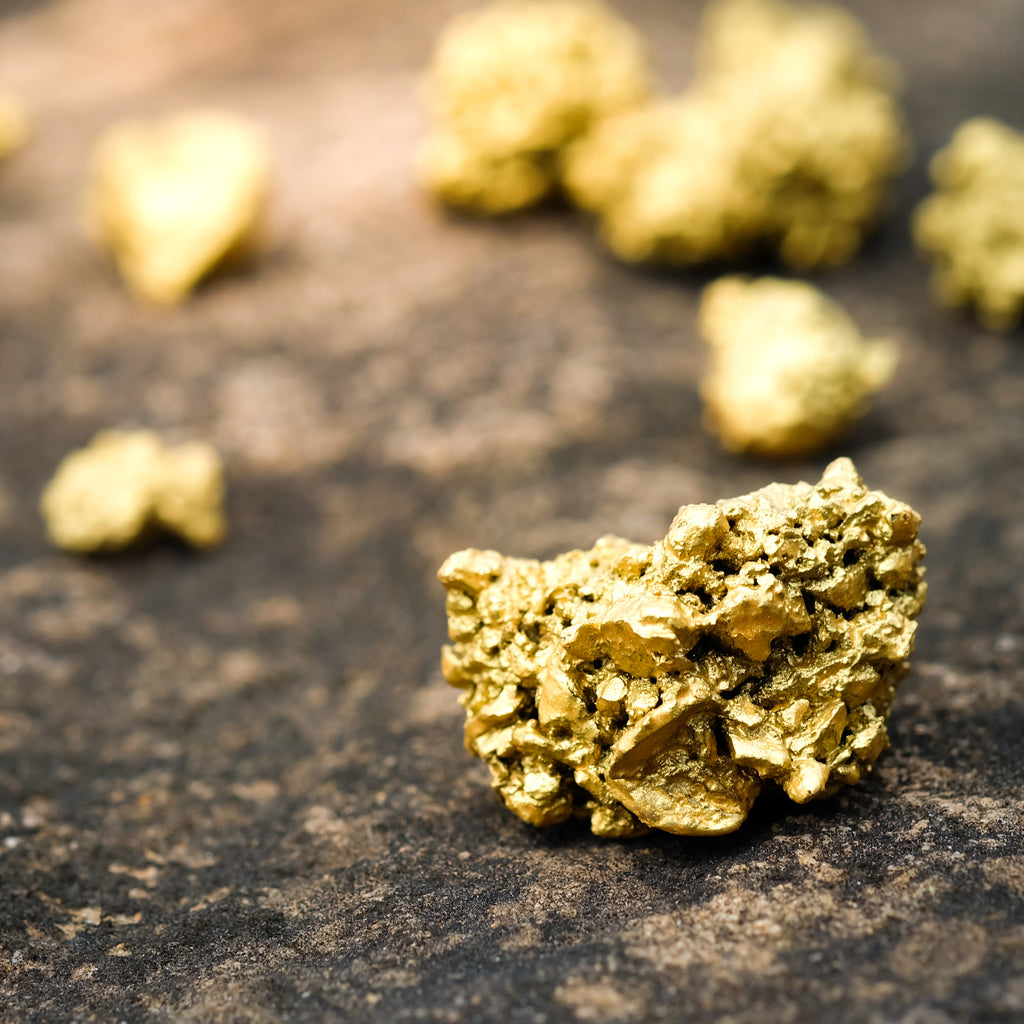natural, treated, and artificial.
With the development of technology, processes of improving the quality and appearance of natural diamonds as well as growing diamonds in the laboratory were made possible. In this article, we will detail and compare all the alternatives. Let us note that there is no dichotomy of good and evil or beautiful and ugly. There are pros cons, and depending on the costs. The purpose of the article is to provide information for an intelligent choice.
Natural diamonds
Those are diamonds found in nature, mined in mines in the belly of the earth or by filters from rivers. Polished by traditional methods of polishing. Other than that, they have not undergone any treatment of any kind. The color of the diamond was the natural color it had when it was removed from the ground, and so was its degree of cleanliness. The diamonds, at their highest grade, are transparent and colorless. Diamonds also appear in yellowish or brown colors that are less appreciated and quite common. The rarer colors - green, blue, pink, orange, black, and the most occasional of all - red. Colored diamonds that meet the "FANCY COLOR" color criterion are costly.
A diamond built of carbon with an orderly crystalline structure is considered the hardest material (10 on the mousse scale) and has a very high luster.
Natural diamonds enhanced
HPHT - These are low color natural diamonds, usually brown which have undergone color enhancement treatment. The process is done at a very high temperature and pressure that simulates the pressure in the soil. The process can be described as a continuation of the ripening of the diamond. After the treatment, the diamond is fixed in its new color that will never change. The monetary value of a diamond is lower than a natural diamond of the same quality. All diamond properties are identical to natural diamonds.
Clarity enhenced diamonds - low-quality diamonds that go through one of two processes. If the diamond has white cracks, the filling material will make the diamond look better and cleaner to an exposed eye. The process hides the crack. If the diamond had a black inclusion, it was removed by drilling a small hole with a laser and melting the black inclusion (pique) with acid. After treatment, the quality of cleanliness of a stuffed diamond over time is not guaranteed. A diamond from which only a black inclusion has been removed will remain clean. A diamond filled with material may lose its material when cleaned with acid. The value of a treated diamond is significantly lower than a natural diamond of the same quality.
Color-enhanced diamonds - Those are natural diamonds that, by exposure to high temperature and pressure conditions, will cause the diamond to change color or, as those who perform the process prefer to say, "color reveal." The color is already imprinted in the diamond, and the process allows it to be revealed. According to them, if the diamond had remained in the ground, the process of color discovery would have happened naturally. After treatment, the color will remain forever. The value of a colored diamond is lower than a natural diamond in the same color. However, all the qualities of an enhanced colored diamond are like a natural diamond. The motivation is to create a variety of colored diamonds at affordable prices.
Laboratory diamonds - Those are diamonds that have been grown by artificial means, in a laboratory, in a process that simulates the conditions in the soil (high pressure and high temperature). They contain the same material from which the natural diamonds are made, the same crystalline structure, and the same hardness and luster properties. Gemologists with advanced and expensive experience and instrumentation can notice slight differences between the natural and the laboratory. Still, without these sophisticated means, no distinction can be discerned. Definitely when the diamond is already set in the jewel.
To some extent, it can be said that a laboratory diamond grows in a supervised process and is, therefore, more orderly than a diamond that has crystallized in the earth's crust under unknown conditions. However, this is a discussion for professionals. The end customer has no meaning to the above discussion. As can be understood, the value of the material (carbon) is very low, and the value of the laboratory diamond is determined by the cost of production technology. Technology and the pace of production are likely to improve over time, and without a major player such as the natural diamond market (De Beers), its price to the final consumer will go down. The properties of a laboratory diamond are the same as those of a natural diamond.
Colored laboratory diamonds: Since the growth process is supervised, the color can be controlled, and colored diamonds can be crystallized. The process is more expensive and, therefore, also costs accordingly.
Notes on lab diamonds:
- There are two methods of producing HPHT and CVD laboratory diamonds. In both growing methods, the result is excellent. However, in terms of buying the final product, the difference between them should not be taken in your calculation.
- There is a bitter debate between those who deal with natural diamonds and those who advocate lab diamonds, and a lawsuit has even been filed with the American Standards Institute to ban the use of lab diamonds as diamonds. Claiming that diamonds are only those mined from the ground. The claim was rejected.
- Proponents of lab diamonds claim that lab diamonds are created in friendly ways that do not harm the planet .Another name is Eco Diamonds.
- Proponents of natural diamonds claim that paying a high price for a piece of jewelry with a natural diamond shows a deep love and commitment to the partner for whom the jewelry was purchased. (As you already understand, the debate is business, and this article deals with the physical and economic aspects only)
Black diamonds - as the name implies, black diamonds are not transparent. There are debates about whether they are natural or not. There is no clear answer. Some of them were used as part of drills for oil drilling, and while drilling was burned and turned black after the drill was blunted, the diamonds were broken and polished into black diamonds. They are very cheap, and those who like black will buy them.
Non-Diamond
Moissanite - is a natural, crystalline, rare mineral with a degree of difficulty, almost like a diamond, and a sparkle higher than a diamond. Appears in nature in diamond-like colors. After polishing, it looks very similar to a diamond. There is also Moissanite that has undergone paint treatments. Since the cost of the Moissanite is much cheaper than a diamond, the economic considerations are not weighty. Therefore, the dilemma is in the beauty of the stone. As already mentioned, the stone is hard and stable, and its color or luster will never change.
White Sapphire: White Sapphire belongs to the Cordorondom family. Precious stone, the Cordurondum, is the third hardest mineral after Diamond and Moissanite (9 on the mousse scale). The Cordurondom in a red appearance is called Ruby. And in all other colors, Sapphire. White Sapphire is rare in nature because any substance that mixes with it will add color to the stone. Therefore, it is also clean. As mentioned, Sapphire is hard, dense with a high sparkle, stable, unbreakable stone that will last forever. It's cheaper compared to diamonds.
There are as well Lab sapphires, which are of high quality, and their economic value is cheaper than the natural. Enlarged white sapphires are used as glass for high-quality watches. (Not scratched)
Zircon - Zircon is a natural mineral that appears in nature when transparent to semi-transparent. It is pretty hard (7.5 on the mousse scale). And has a high luster. New zircon stone looks excellent over time due to (reasonable) use and small blows that the stone absorbs over time. Small fractures and scratches are formed. The stone loses its luster. Its cost is low.
Morganite - a stone from the Beryl family, semi-precious, usually clean of inclusions, crystalline. Hard (7.5-8 on the mousse scale) and brilliant. Even in its lightest color, Morganite will have a pinkish tint and is therefore also known as pink beryl. The Emerald Stone is Beryl in green color, and Aqua Marin is Beryl in blue. Morganite is a mainly diamond replacement due to its low price (about $ 300 per carat)
Aqua Marin - a stone from the Beryl family (Morganite and Emerald), semi-precious. It is usually clean and transparent. Even in its lightest color, there is still a slight bluish tinge. It is hard (7.5-8 on a mousse scale), and its luster is lower than a diamond. Aqua Marine is considered a semi-precious stone and is a substitute for a diamond, mainly due to its low price (about $ 300 per carat)
Goshenite - Another stone from the Beryl family, white, transparent, and usually free of inclusions, it's hard (7.5-8 on the mousse scale). It is not common in jewelry because its sparkle is not as intense as diamond or Sapphire. However, due to its properties, Goshenite was used to create lenses.
In conclusion
There are many more gems. In this article, we have concentrated on those with a similar appearance to diamonds and which are considered when you come to buy an Engagement ring or Solitaire ring for any occasion. All of the stones mentioned are of high hardness and crystalline and can be used daily. It is essential to maintain them and clean them with lukewarm water and soap (not acid and not rub with a toothbrush, the gold will scratch)
No doubt, a diamond is the best choice and will fulfill its role to the satisfaction and joy of the wearer, but it will always be the precious choice. Therefore, there are substitutes that, in a given budget, will provide a satisfactory and happy solution. The laboratory diamond looks precisely the same as the natural diamond, and its price is much lower. The white Sapphire belongs to the group of precious stones, strong, shiny, and beautiful. With a passing glance with the naked eye, you can not tell the difference between it and a diamond.
And yet, if there are still budget constraints, you can choose from the semi-precious gems or zircon.
At the end of the day, beauty is in the eye of the beholder.


